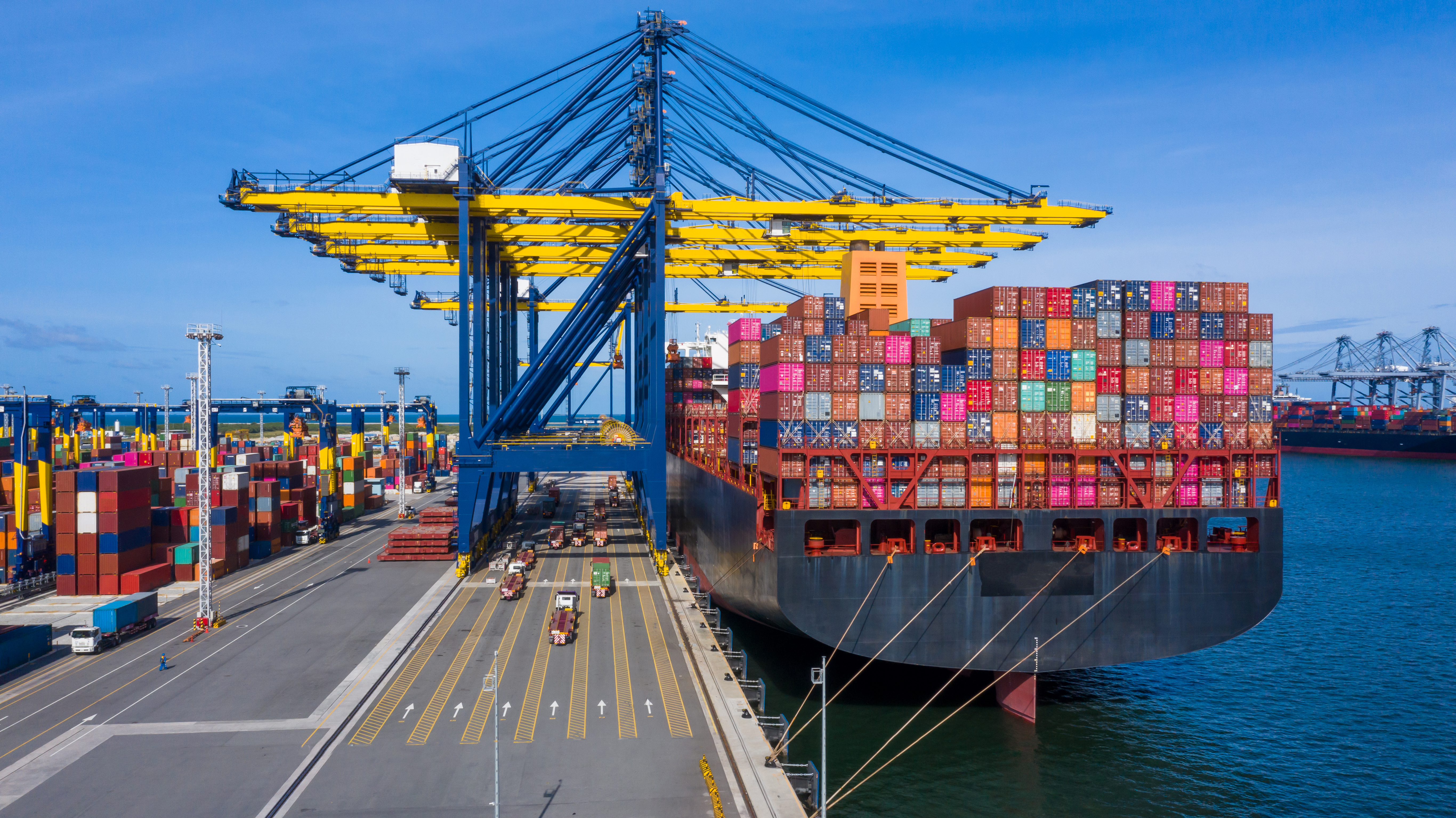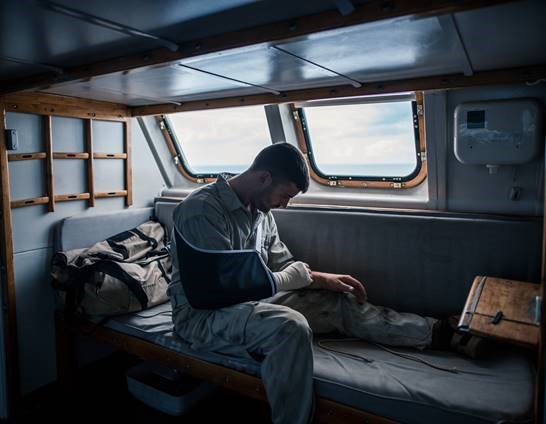Introduction
Liquefied petroleum gas (LPG - principally propane and butane) has evolved into one of the fastest-growing maritime commodities. It powers homes and vehicles, feeds petrochemical plants, and serves as a transitional energy source in the global decarbonisation agenda . The global seaborne LPG trade has grown significantly, with Asia remaining the largest importing region. The Middle East and the United States have become the leading exporters, supplying approximately 80% of global exports.
For the operators of Gas ships, this expansion presents a complex risk landscape. The cargoes are high in value, volatile in nature, and frequently resold mid-voyage. Even minor procedural lapses or incorrect valve alignments can cascade into significant liabilities, including mis-delivery, contamination, or pollution.
At the same time, the transportation of Ethane and Ammonia has also increased. Ethane exports from the U.S. hit a record 492 000 barrels per day in 2024 (U.S. Energy Information Administration), while S&P Global Commodity Insights forecast that global ammonia trade could reach 160 million tonnes by 2050, a ten-fold increase. For shipowners and Clubs alike, these shifts mark a new frontier introducing more specialised ships, new cargoes, unfamiliar liabilities, and subject operators to heightened regulatory scrutiny.
Ship Design determines exposure
Fully Pressurised (FP)
Smaller vessels (typically < 3 000 m³) carry LPG at ambient temperature under pressures of 17-18 bar. Their simplicity belies the risks: frequent port calls, manual hose connections, and limited automation increase the risk of manifold leaks and minor spills.
Semi-Pressurised / Refrigerated (SP/FR)
Medium-size carriers (5 000-20 000 m³) can load from either pressurised or refrigerated terminals. Their operational flexibility comes with error pathways, especially when switching between pressure and refrigeration modes, where valve sequencing or compressor logic failures can result in vapour release.
Fully Refrigerated (FR) & Very Large Gas Carriers (VLGCs)
Long-haul vessels with capacities between 30,000 m³ and 85,000 m³ dominate inter-regional LPG transport. According to Clarksons Research, the VLGC fleet continues to expand, with a substantial orderbook scheduled for delivery through the mid-2020 reflecting increased trade volumes and exposure due to the high value of each cargo. Fully refrigerated VLGCs are specialised ships that carry liquefied petroleum gas (LPG) at very low temperatures (around –48 °C) and near-atmospheric pressure. Typically exceeding 70,000 m³, these ships feature prismatic steel tanks, advanced reliquefication systems to control boil-off gas, and rigorous temperature and pressure safety systems. Operating mainly on long-haul routes, such as from the US or Middle East to Asia, these vessels achieve economies of scale but require specialised port facilities.
Ethane Carriers (VLECs)
The growth of the ethane trade is a direct outcome of the U.S. shale gas revolution, which has unlocked vast quantities of natural gas liquids and transformed ethane from a domestic feedstock into a global seaborne commodity. The first Very Large Ethane Carriers (VLECs) notably the 87,000 m³ “Ethane Crystal” and “Ethane Emerald” series entered service between 2016 and 2017, pioneering long-haul transoceanic ethane transport. Subsequent generations of ABS-classed 85,000 m3 designs, expanded both cargo capacity and cryogenic performance envelopes, with tank design limits as low as –104 °C. These vessels bridge the technological gap between traditional LPG carriers and LNG carriers, employing membrane or Type-B containment systems, cryogenic-grade steels, and boil-off gas management systems capable of reliquefication or power generation.
Ethane is typically carried at around –89 °C and near-atmospheric pressure, demanding the same level of thermal control and material discipline found in LNG operations. The liquefied gas is used primarily as petrochemical feedstock for ethylene production, linking U.S. shale basins to large steam crackers in China, India, Europe, and Southeast Asia.
From a P&I Club perspective, VLECs present a distinctive risk profile. Their larger size and longer voyage durations translate into higher insured values, increased reliance on automation, and tighter scheduling windows at specialised terminals. The cryogenic environment heightens the risk of fatigue cracking, brittle fracture, and containment system failure, while limited global receiving infrastructure means that any deviation, delay, or off-spec cargo can escalate into huge claims. With only a limited number of terminals worldwide capable of handling ethane imports, operational flexibility is restricted, amplifying the impact of even minor procedural errors.
As the ethane trade continues to expand through new crackers in Asia and Europe and as more dual-fuel, ethane-powered vessels enter service, the line between cargo and fuel risk is beginning to blur. For operators this demands exceptional procedural precision, robust documentation, and vigilant condition monitoring.
Hazard and Risk Landscape
The carriage of LPG presents a distinct risk profile requiring precise technical and procedural control.
- Fire and Explosion: LPG and ethane vapours are heavier than air and easily ignited. Static discharge or manifold leaks can cause serious losses. Adherence to SIGTTO Ship-Shore Interface Guidelines is essential for prevention.
- Cryogenic Stress: Uneven cooling during cargo operations can lead to brittle fracture, particularly on ethane carriers, where temperature gradients are more severe.
Contamination and Off-Spec Cargo: Even minor deviations in propane-butane ratio or trace moisture can render a cargo unsaleable, triggering contractual and insurance disputes. - STS and Terminal Interface Risk: Operations should be covered by proper STS transfer standards covering fendering, mooring, and ESD interlocks. Breaches in these areas can lead to pollution and property claims.
- Deviation and Mis-Delivery: Mid-voyage resales often prompt requests for discharge without bills of lading, a source for potential disputes.
- Regulatory Compliance: Breaches of SOLAS or MARPOL Annex VI, particularly regarding vapour emissions, may result in fines.
Measurement and shortage disputes are a common flashpoint. LPG cargoes are traded on tight specifications and rely on precise thermodynamic corrections for volume, pressure, and temperature. Even small inaccuracies in calibration or incomplete cargo logbooks can undermine a Member’s defence in shortage or contamination claims. The Club’s technical risk assessment team often stresses the importance of consistent data integrity. Records must be detailed enough to reconstruct every transfer operation from start to finish.
Change-of-grade errors remain a persistent technical hazard. When switching between propane, butane, or mixed grades, residual liquids, moisture, or incorrect inerting are the most common sources of contamination. The Club’s surveyors repeatedly note that a well-structured grade-change procedure with time-stamped records, verified dew-point readings, and photographic evidence where possible is the best defence against off-spec cargo disputes.
Another area of concern is ship-to-ship (STS) operations. Ships sometimes conduct STS transfers at anchorages that have not been vetted or approved by underwriters. This can potentially complicate matters if the operation falls outside industry guidelines. The Club’s risk assessment team often intervenes to review mooring arrangements, fendering plans, and weather windows, ensuring compliance before any transfer proceeds.
Finally, Letters of Indemnity (LOIs) remain a perennial source of conflict between commercial urgency and insurable prudence. Pressure to deliver cargoes without original bills of lading, to alternate ports, or to new receivers can lead to acts that is likely to compromise Club cover. The Club consistently reminds its Members that while LOIs are common commercial tools, they do not legalise what regulations prohibit or reinstate cover for excluded acts.
Letters of Indemnity (LOIs) – Common Requests, Consistent Risks
In the LPG and wider gas carrier trades, Letters of Indemnity (LOIs) are a constant feature of commercial operations, but also one of the most misunderstood instruments in maritime practice. They are frequently used to overcome documentary or logistical delays to fill the hole in P&I cover that is created when actions that fall outside the lawful terms of carriage.
The most frequent request is for delivery without production of original bills of lading, typically because the cargo has been sold multiple times and the paperwork lags behind. Even when using the International Group of P&I Clubs’ approved LOI wording, the indemnity only provides limited commercial protection. If the issuer defaults, the owner bears the full exposure.
Equally common are requests to change the discharge port or receiver, often prompted by market fluctuations. Any diversion from the agreed voyage must strictly comply with the provisions of the charterparty and adhere to all applicable local customs regulations. Deviations undertaken solely for commercial convenience, without proper contractual or regulatory justification, may constitute a breach of contract and could jeopardise insurance coverage.
Ship-to-ship (STS) transfers or offshore discharges pose further complications. Club cover remains valid only if operations are conducted in full compliance with industry guidelines, and at sites approved by underwriters. Unapproved STS transfers, particularly at exposed or congested anchorages, can expose owners to liabilities far beyond the scope of standard protection.
Requests for onboard blending or commingling are particularly problematic. Under SOLAS Regulation VI/5-2, the physical blending of bulk liquid cargoes during a sea passage is strictly prohibited except under narrow exemptions. Any LOI attempting to indemnify an unlawful act is legally void and unenforceable.
Lastly, some charterers request cargo heating, typically to ease discharge at terminals lacking full refrigeration capacity. Such actions, if not properly controlled, can increase vapour pressure, damage containment systems, and jeopardise the vessel’s structural integrity.
The Club’s position is unequivocal: an LOI does not make the uninsurable insured. Members are urged to use only International Group approved templates, ensure that the issuer is financially reliable, and refuse any indemnity that demands conduct contrary to law, safety, or good seamanship.
Case Study: Carriage of Ammonia and Propane Concurrently
Ammonia is re-emerging as both a cargo and a potential carbon-free marine fuel. The carriage of ammonia (NH₃) on gas carriers represents one of the most technically demanding and safety-critical operations in the liquefied gas trade. Unlike LPG cargoes such as propane or butane, ammonia is highly toxic, corrosive, and reactive with moisture, forming caustic ammonium hydroxide on contact with water or humidity. It is transported either in fully refrigerated form at about –33 °C and atmospheric pressure or under moderate pressure at ambient temperatures, depending on ship type and terminal capability.
Recently, one of the Club’s LPG vessel Members planned to carry ammonia (NH₃) and propane (C3) concurrently on a gas carrier. Although both cargoes were listed on the vessel’s Certificate of Fitness (COF), the operation presented significant technical and chemical incompatibility challenges. Ammonia, being highly toxic and reactive, cannot be loaded into inert atmospheres and can corrode or contaminate adjoining systems if even minor valve leakage occurs.
Recognising the complexity of the operation, the Member approached the UK P&I Club’s technical risk assessment team for guidance on three fronts, cover validity, contamination risks while carrying NH₃ and C3 versus C3 and Butane(C4), and recommended safety procedures.
The Club’s technical team conducted a detailed review of the vessel’s cargo system design, operational history, and procedural controls. Drawing on their experience with similar dual-cargo operations, they noted that while the carriage of C₃ and NH₃ together is theoretically permissible under IGC Code Chapter 19, it is only safe if strict segregation requirements are fully implemented and verified. The team emphasised that any lapse in system integrity could result in cargo cross-contamination and severe safety hazards.
To complement its internal analysis, the Club engaged Brookes Bell, as technical consultants, to provide an independent technical appraisal. Brookes Bell confirmed that the operation was feasible only if complete segregation of the two cargo systems was achieved, with all valves and lines integrity maintained.
In practice, several critical considerations were highlighted:
- Some LPG carriers feature dual cargo system configurations (System 1 and System 2) to facilitate handling of chemically distinct cargoes, while other vessels rely on spool-piece isolation arrangements to segregate lines.
- Valve integrity was identified as a key risk factor. Ageing valves may develop minor internal leaks, making pressure testing essential before loading both grades.
Compressor operation required special attention. For C3 and C4 cargoes, switching compressors is relatively straightforward, but ammonia loading is more time-consuming and may be optimised if shore vapour-return facilities are available. - The fixed gas detection system must be capable of detecting both C3 and NH₃ atmospheres, usually via a selector switch, and verified for cross-sensitivity.
- Systems such as cargo vaporisers or heaters that interconnect the two systems should be blanked off if not in use, to eliminate any residual cross-flow potential.
- The operators were advised to adopt a step-by-step grade-change and tank-isolation procedure, supported by documented checklists.
- Enhanced PPE and additional emergency escape breathing devices (EEBDs), as required by the IGC Code, were mandated for crew safety.
- Senior officers onboard should possess prior cargo-handling experience with both ammonia and propane to ensure familiarity with their contrasting characteristics.
The Club’s technical risk assessment team remained deeply involved throughout the process. Based on these verified safeguards, the Club confirmed that P&I cover would respond in the usual manner. The operation was completed without incident and both cargoes were delivered on-specification. The case exemplifies the value of combining the Club’s risk-management oversight along with specialist technical expertise.
Conclusion
As global trade in LPG, ethane, and ammonia accelerates, so too does the complexity of managing their risks. The industry’s challenge lies not merely in moving more cargo safely, but in doing so with proper procedural discipline. Each molecule carried represents both opportunity and exposure where a single oversight in calibration, valve sequencing, or documentation can cascade into multimillion-dollar consequences.
From the Club’s vantage point, the path forward is not defined by new technology alone but by renewed vigilance, rigorous adherence to safety protocols and operating procedures, meticulous record-keeping, transparent communication between ship and shore, and early consultation with technical experts. These practices remain the most effective mitigation to operational risks and defences to claims.



![The Solomon Trader [2025] EWCA Civ 1387: The ‘pay to be paid’ rule affirmed in the Court of Appeal](/fileadmin/uploads/ukpandi/News_Images/AdobeStock_104743067.jpeg)

